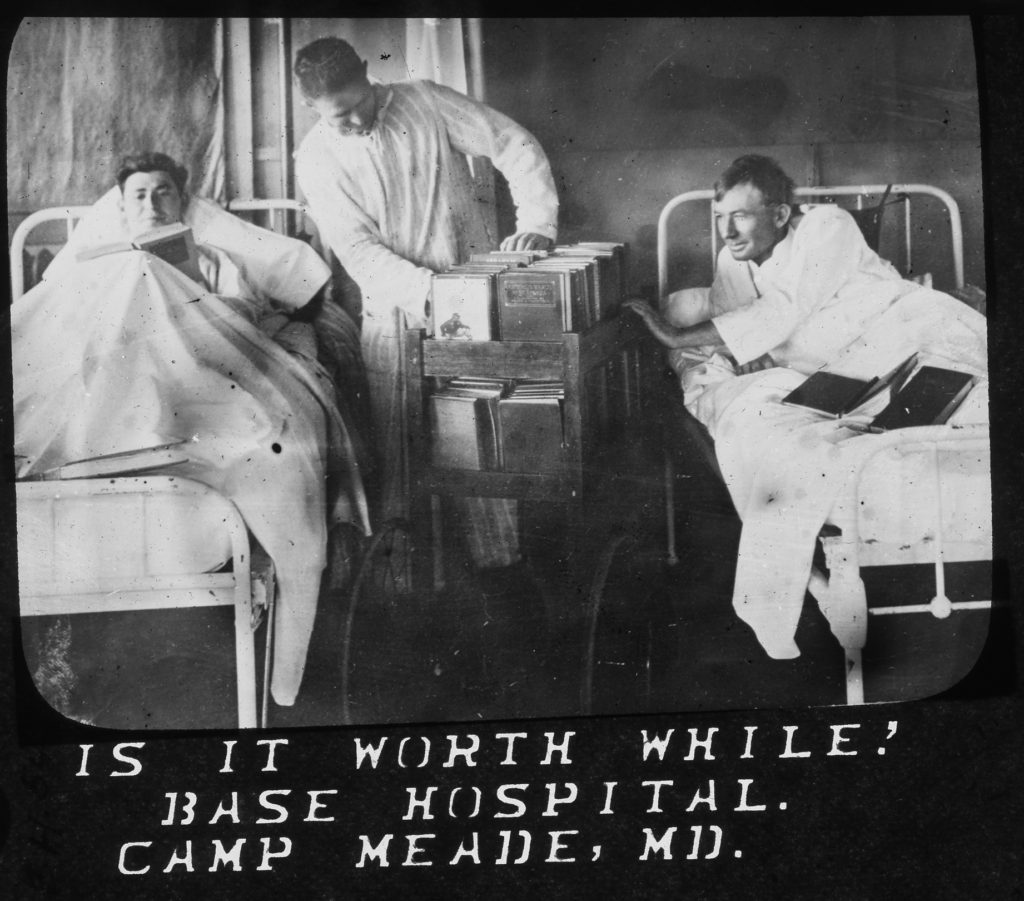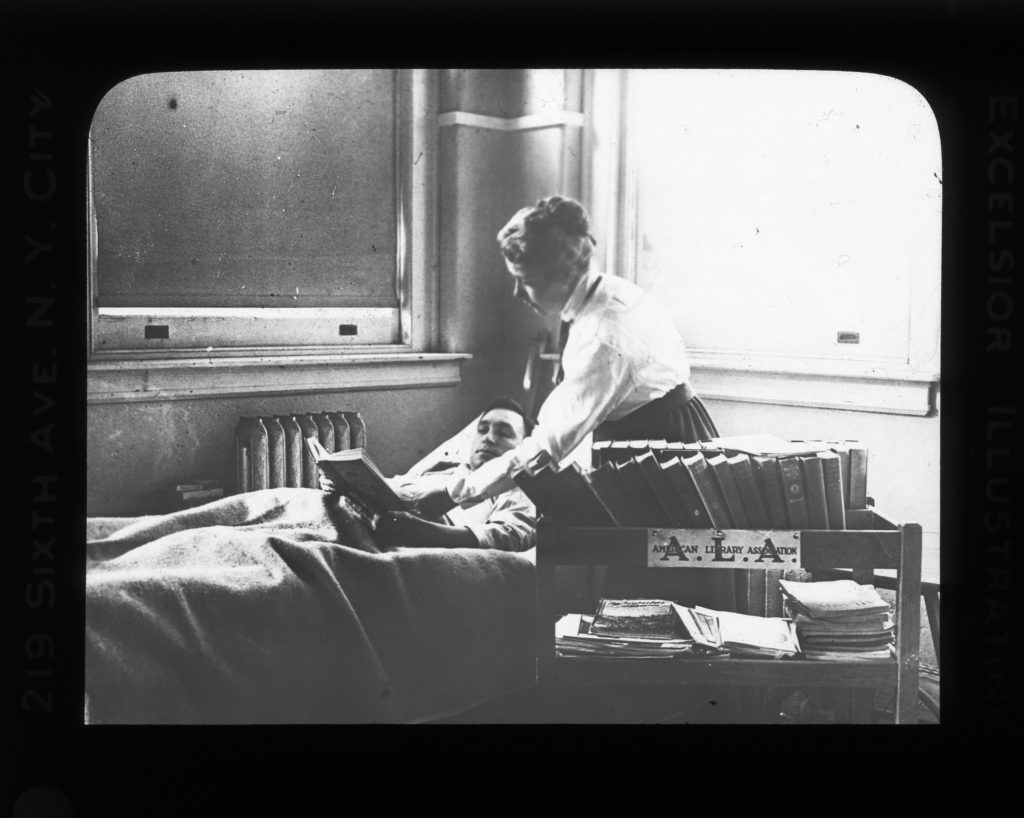
When the United States entered World War I in 1917, troops travelled to the front with the help of massive mobilization efforts to provide weapons, food, and books. The Library War Service, formed by the Library of Congress and the American Library Association, created a national system to collect and distribute books to troops at home and abroad during and after the war. Between 1917 and 1920, the Library War Service distributed approximately 7-10 million books and magazines. The Service built 36 camp libraries to incorporate reading into daily life, and provided library collections to over 500 locations, including military hospitals.
The Library War Service drew funds from the Carnegie Corporation and national fundraising campaigns to buy books. To fill the remainder of its shelves, it relied on private donations, resulting in some unusual contributions. One librarian working for the War Service recalled a woman who donated her own diary to be read by the troops, while another library patron felt a book on funeral science might be just what soldiers wanted at the front. To guide donations, newspapers like the Hartford Courant printed instructions for what kinds of books made the best reading for men at war. The Service requested educational textbooks, magazines, and “novels, biographies, and travel” as particularly popular genres. “They do not want out-of-date books of any kind,” the Hartford Courant cautioned, “they do not want the kinds of books that appeal especially to women.”

At camps, military hospitals, YMCA huts and other relief stations, librarians distributed books, believing that reading played a vital role in the war effort. Books could provide:
- Education
- Entertainment
- War Training
- Vocational Training
- Therapy